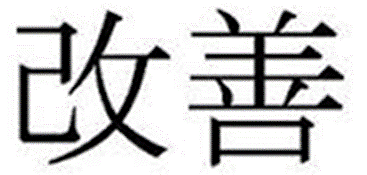BETTER IS BEST
Kenneth Miller | January 2016 | Last Updated April 2024
An object at rest stays at rest and an object in motion stays in motion
Newton’s 1st Law
It’s safe to assume that most of us would be unlikely think of the natural laws of physics in the context of organizations or their culture. But we see the connection as fairly obvious. If we desire a culture that drives performance excellence—and we’ll assume that all of us do—it cannot be one at rest. It must exist in a conscious and intentional state of perpetual motion. As Newton tells us, “…an object in motion stays in motion”, and, we would add, inertia is the enemy of progress. Ergo, our premise—and mantra—is this:
It’s safe to assume that most of us would be unlikely think of the natural laws of physics in the context of organizations or their culture. But we see the connection as fairly obvious. If we desire a culture that drives performance excellence—and we’ll assume that all of us do—it cannot be one at rest. It must exist in a conscious and intentional state of perpetual motion. As Newton tells us, “…an object in motion stays in motion”, and—we would add—inertia is the enemy of progress. Ergo, our premise—and mantra—is this:
If you’re not moving forward, you’re losing ground.
Thus, we see such motion—change—as an essential constant to be led rather than an isolated event requiring some sort of unique program or one-off protocol to be ‘managed’.

This notion of change as a constant is to some a paradox, to others a threat—humans are, after all, hard-wired to resist change (Google amygdala for details). But to us, continuous change is a palpable inevitability—so one is well-advised to get used to it, and make it a positive force for improvement. In fact, as will be seen below, we advocate conscious effort to assure that perpetual positive change—forward motion, if you like—becomes a key feature of an organization’s culture and a mantra of its leadership.
As Einstein put it,
“The measure of intelligence is the ability to change.”
Or, as W Edwards Deming more bluntly articulated,
“It is not necessary to change. Survival is not mandatory.”
Like Deming, we prefer to think in terms of change for the better, and endeavor to make it virtually autonomic—akin to breathing.
Our goal here is not to provide a roadmap, but perhaps a compass to assist in navigating the sometimes treacherous shoals of change—advancing every day in the direction of BETTER.
Many products are sold in models with varying degrees of quality or features, often characterized as ‘Good’, ‘Better’, and ‘Best’. We, however should not be satisfied with some static sense of an ephemeral ‘Best’—we must be in constant pursuit of ‘Better’.
America’s Founders seemed to embrace this notion when they characterized the nascent US Constitution as a quest not for a ‘perfect union’, but rather for a “more perfect union”. Whatever one thinks of the syntax, it’s inarguable that the concept has had staying power.

Fast-forward a couple centuries, and we find ourselves challenged to adapt to the realities of a new-ish millennium in which ‘innovation’ has been the single most commonly cited core value among S&P 500 companies, and many—whether Apple, Google, the corner bakery or the taco truck—have come to adopt some version of the mantra innovate or die.
That may sound a bit dramatic, but innovation is nothing more than directive change—change in a continual quest for Better. We use the term to refer to improvements in technology, product and process, and we speak of disruptive innovation, value innovation, end-user innovation, creative destruction, etc—all expressions of positive change in one form or another.
Deming taught that “You do not plan innovation” and that “Innovation comes from people who take joy in their work”. Ergo, we might conclude that our task is simply to create a properly joyful workplace, then stand back and watch innovation happen. Of course, it’s hardly that simple—as Dr Deming well understood. We must engage in a permanent process of reinvention/reinvigoration as to the character and attributes of the workplace—‘best’ is an ephemeral state. We need also be cognizant that real innovation is likewise not a one-off event, but a process in perpetuity. And there can be no ‘designated innovators’. It’s a team sport—even the Lone Ranger had a partner.
So if collaborative innovation is the goal, how to achieve and institutionalize it is the challenge. Culture, we maintain, is the engine of the solution. That of course is a broader subject than we can cover here (see The Culture Dynamic), but it is implicit throughout this discussion.
We should elaborate that in our context, innovation is not limited to technology, product or process development, nor is it necessarily confined to monumental or ‘disruptive’ ideas. Rather, we think, for example, that creativity in designing an environment that promotes collaboration and thus optimizes the potential for genuine innovation is itself genuinely innovative.
Likewise, a series of small changes may have a cumulative impact that could be, well, disruptive. Indeed, a series of small incremental changes is virtually assured to meet with less of that hard-wired amygdalar resistance mentioned above. And it’s no quibble with Deming to say we can plan the process to enable and consciously empower the small changes that may well lead to—or in the aggregate amount to—creativity, innovation, and even disruption.
‘Big Ideas’ often arise from the ashes of small ones.
Failure is a learning experience.
Not coincidentally, another of Deming’s key principles is the necessity of continuous improvement that itself drives innovation—as suggested above, stasis is no virtue here. This is often referred to as Kaizen—a Sino-Japanese term meaning ‘improvement’ or ‘good change’. This concept was successfully employed by Deming and others in the reestablishment of the Japanese manufacturing base following its decimation in World War II, and it has survived the intervening generations as a pillar of good management practice, underlying such more contemporary process systems as Total Quality Management, Lean, Six Sigma, Agile, etc. We think of this as the consummate notion of Better and consider it the essential state of mind that must ultimately pervade any organization seeking genuine excellence.

To accomplish this and fully integrate the concept of perpetual improvement, Kaizen, Secret Sauce, or whatever we may choose to call it, we must overcome the inherent limitations of the ‘conventional wisdom’ and escape the confines of the proverbial ‘box’. And we should recognize that to effectively foster behaviors that produce real creativity, innovation and improvement requires that we optimize the organizational construct to enable and empower, as opposed to compel and control.
This, of course, necessarily begins—but hardly ends—at the top of the organization. This is no easy task, and most certainly challenges long-held and solidly entrenched assumptions about the nature of organizations and their leadership.
If we are to succeed, we must structure human interaction within the organization to routinely incent initiative, accept error for its educational value, and acknowledge simultaneously the value of the individual and the imperative of collaborative effort. Overarching all of this should be persistence in reinforcing the fundamental goal of doing whatever it is we do BETTER—every day. The eye must never be allowed to stray from the ball, and we can indulge no tolerance of the status quo.
If we are truly able to engender this attitude and orientation throughout our organization, we will have placed a major building block in the structure of the organization’s culture.
So, change is not to be feared, resisted, or ‘managed’ as though it were a one-off occurrence or somehow out of the ordinary—rather, it should be pursued, embraced, and adopted as routine. And we must engender the realization that change is not an event—it is a process. And it’s perpetual. And it’s a good thing.
Technology and the products it spawns are changing so rapidly that there can be no comfort in having created the mousetrap du jour—plasma gives way to LED; iPhone begets Galaxy; DVD meets MP4; iPad is confronted with Surface; 5G supplants 4G, streaming content gnaws at the cord, and now we’re seeing autonomous cars and (gasp!) AI…and the beat rolls on.
The accelerating pace of technological evolution will require nimble adaptation. And the competition will eventually match or one-up your product—but they cannot duplicate what it is that makes your organization uniquely itself. The perpetual quest for Better is your ‘ultimate strategic asset’, as UCLA’s Eric Flamholtz has labeled corporate culture.
Herb Kelleher, co-founder and long-time CEO of Southwest Airlines once observed:
“…the only thing your competitors can’t eventually duplicate is your culture”
And former IBM CEO Lou Gerstner wrote that:
“…culture isn’t just one aspect of the game, it IS the game. In the end, an organization is nothing more than the collective capacity of its people to create value.”
But perhaps the most succinct expression of this idea is to be found in the title of the 2014 book by psychologist/consultant/speaker/ author, Dr Gustavo Grodnitzky:
“Culture Trumps Everything”
The extent to which we are able to embed this orientation toward perpetual improvement–the relentless pursuit of BETTER–in all that we do will in large part be the measure of the success of any effort to enhance the culture, increase workforce engagement, and improve individual and organizational performance.
And that, after all, is what it’s all about—right?
#Think about it
